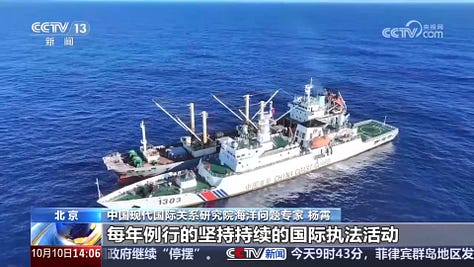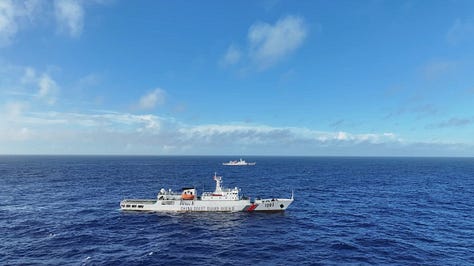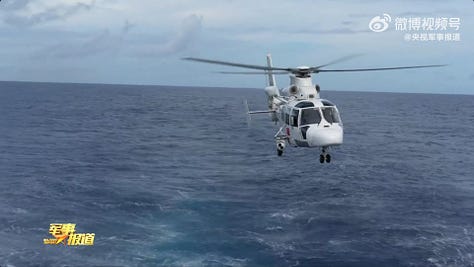News analysis-themed posts typically focus on recent developments. These posts will tend to be much shorter and less detailed than analysis-themed posts.
The China Coast Guard (CCG) recently completed its 2025 “fisheries law enforcement patrol mission” in the North Pacific. Two CCG vessels, the Hai Jing 1303 and the Hai Jing 1305, undertook the patrol alongside one CCG Z-9 helicopter, which either of these hangar and flight deck-equipped CCG vessels could embark. This latest CCG foray into the North Pacific resulted in what appears to have been an uneventful patrol that lasted 31 days.



The CCG is part of China’s paramilitary People’s Armed Police (PAP), which reports to China’s Central Military Commission (CMC) in the same manner as the People’s Liberation Army (PLA). It is important to recognize that the CCG is one of China’s three coast guard-type organizations alongside the civilian China Maritime Safety Administration (CMSA) and the civilian China Rescue and Salvage Bureau. While the CCG is a decidedly heterogeneous organization undertaking a fairly diverse array of missions and roles, parts of the CCG increasingly serve as an adjunct to the PLA Navy (PLAN) alongside the Chinese Maritime Militia. In recent years, the CCG has established what is best characterized as a fast-expanding armed “high seas fleet” that appears to be intended to not only intimidate and overpower rival claimants in the disputed waters of the South China Sea but also to spearhead a PLAN-backstopped quarantine/blockade type operation in the event of a major crisis over the political fate of Taiwan. While the two CCG vessels that undertook this North Pacific patrol are not particularly well-suited to operating alongside the PLAN in a quarantine/blockade type operation in the manner of the new ships that have and continue to be built for the CCG’s “high seas fleet,” they nevertheless have the range and endurance required to do so.
One of the longstanding uncertainties about the future of the CCG concerns whether it will have a regular “overseas” presence. These regular but very brief North Pacific patrols constitute the CCG’s most distant deployments by a very large margin. Surprisingly, Chinese decision-makers have so far not elected to dispatch one or more CCG vessels to undertake counter-piracy and, more generally, naval diplomacy/forward presence deployments in the Indian Ocean and perhaps beyond. While the CCG is administratively part of the paramilitary PAP and, as such, reports to the CMC in the same manner as the PLAN, white-hulled CCG port calls and a hypothetical permanent white-hulled CCG base in a foreign country may receive far less scrutiny than a comparable gray-hulled PLAN presence.
Deployments to the North Pacific suggest a focus on unremarkable constabulary-type coast guard missions in distant waters at a time when much of the CCG aggressively patrols disputed waters in the South China Sea, while the CCG’s fast-expanding “high seas fleet” exists to spearhead a quarantine/blockade of Taiwan. In another context, the involved decision-makers may have decided against assigning a single organization this increasingly diverse array of missions and roles. As things stand, the CCG’s future is unclear, and regular but brief deployments to the North Pacific may or may not be reflective of the CCG’s priorities.

